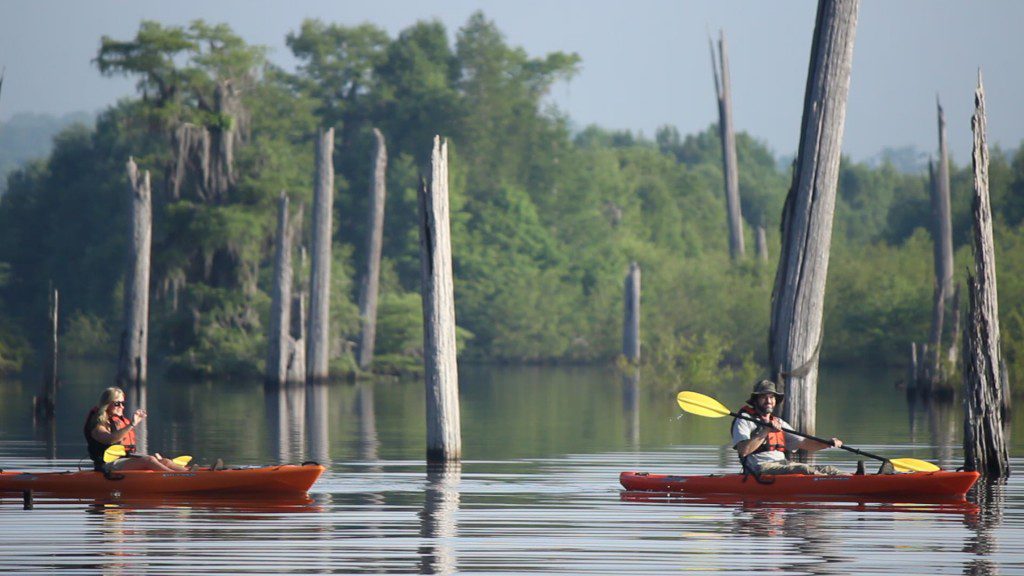If you see fish kills on the Apalachicola or other waterway, report it to Florida Fish and Wildlife online or by calling their hotline at 800-636-0511. We will continue to follow the story as new information becomes available.
Subscribe to the WFSU Ecology Blog to receive more videos and articles about our local, natural areas, and subscribe to the WFSU Ecology Youtube Channel.
Rob Diaz de Villegas WFSU Public Media
Saturday (10/20/18) Update
Riverkeeper Georgia Ackerman has been in touch with Alex Reed of the Department of Environmental Protection Division of Water Resource Management, located in Panama City. After Hurricane Michael, the Division is operating at Gulf Coast Community College with limited phone and wifi connectivity.
Per Alex Reed, DEP and FWC are working together to gather data at points upstream and downstream of the sewage spill. They’ll be sampling for a variety of contaminants, salt, and oxygen levels. While a sewage spill is a likely cause for fish kills, these events are common during hurricanes. For an explanation of how a strong storm can affect fish, continue reading.
Original Story
Researchers with Florida Fish and Wildlife suspect that a sewage release is partially responsible for fish kills in Gulf and Franklin Counties. The source of the sewage is a treatment plant in Wewahitchka, on the Chipola River. Earlier this week the plant was reported to have released 80,000 gallons of partially treated wastewater after losing power during Hurricane Michael. FWC has received several reports of dead fish in the Apalachicola River delta downstream of the spill.
FWC researchers are currently investigating the causes and extent of the fish kills. Apalachicola Riverkeeper Georgia Ackerman encourages citizens report any sightings of dead fish.
“Getting tissue samples from the fish, getting water quality samples, understanding what’s going on with the system so that we know all these different variables and can get good science and facts.” Georgia said.
Heartbreak in the Apalachicola River delta
Friday morning, she conducted her own survey of the river delta with Riverkeeper volunteer Roy Ogles. Ogles, retired, managed St. George Island State Park, and other state parks in Florida. The video above, taken by Georgia, shows what they encountered upon arriving at the Abercrombie boat ramp a few miles north of Apalachicola.
“As you approached the boat ramp, you could smell an odor in the air.” Georgia said. “We saw catfish right at the boat ramp with their heads up, kind of gasping for air.”
Georgia and Roy cut across the Apalachicola River delta.
This part of the river splits into several smaller channels called distributaries, which fan out from the main channel. Traveling south, cypress and tupelo give way to marsh grasses. This is critical estuary habitat for Apalachicola Bay, which we explored in 2016 with the RiverTrek team.
“As we were out on the river,” Georgia said, “we continued to see a variety of fish species both on the banks of the river and caught up in the vegetation, as well as floating in the river.”
They saw mullet, blue crab, eel, bream, largemouth black bass, and gar, among others. When they got to the St. Marks River, “That’s when we started seeing sturgeon.” said Roy.
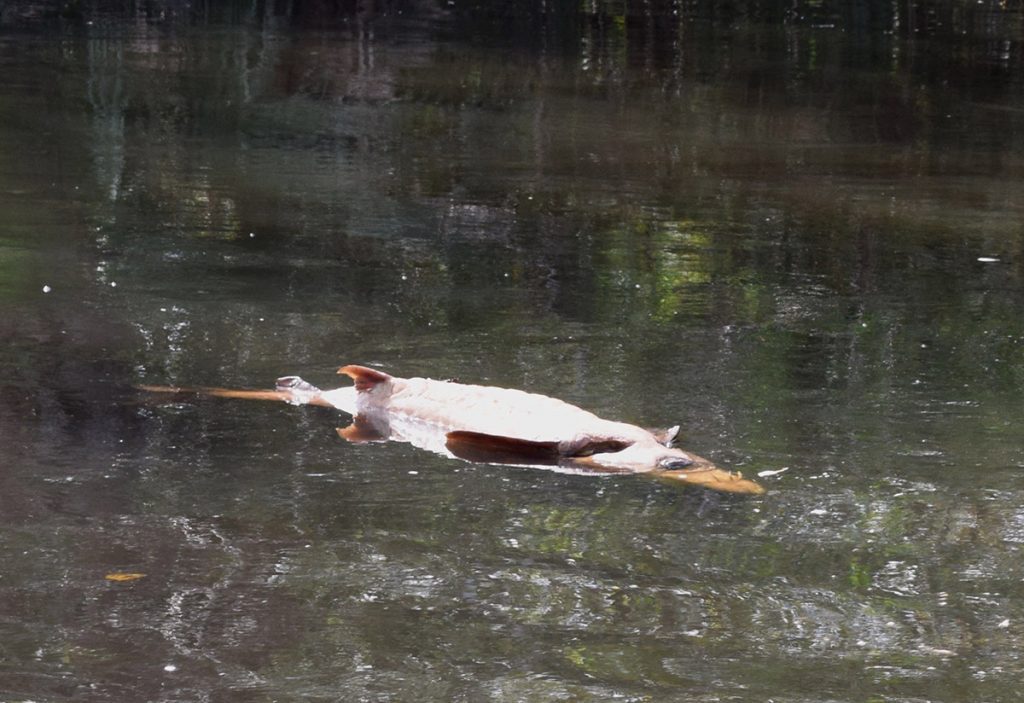
Gulf Sturgeon, floating dead on the St. Marks River (Distributary of the Apalachicola). This was one of about sixteen Georgia and Roy spotted of this threatened species. Photo by Georgia Ackerman, Apalachicola Riverkeeper.
“One of the things Roy and I were really heartbroken to see today were gulf sturgeon.” Georgia said. Gulf sturgeon is a state and federally threatened species. “And to see one of those floating belly up, it saddened us.”
The presence of these dead fish downstream of the sewage spill is suggestive, but more research is needed to determine exactly how much of a role it played. “We understand that oxygen deprivation events happen a lot with hurricanes.” Georgia said. “We saw that with Hurricane Florence in other regions.”
Fish Kill Events After Hurricanes
The first fish kill called into the Riverkeeper office was upstream of the treatment plant.
“On Tuesday (October 16), an Apalachicola Riverkeeper member contacted me,” Georgia said. “We were told, ‘We’re seeing dead fish in Dead Lakes’.” Riverkeeper reported the fish kill to FWC, who instructed them to get water samples. The Riverkeeper member is Matthew Godwin, who showed us the Dead Lakes in 2014.
Fish kills are common after hurricanes. Retired FWC biologist Michael Hill explains.
“The violent wind churns up the bottom.” He says. “And there’s a lot of organic material that is going though the decomposition process.” This is a process that uses up oxygen in the water. “And that’s called Biological Oxygen Demand (BOD). That violent stirring suspends all that organic material in the water column. And then all of it starts to decompose.”
Because this section of the Chipola River was dammed for several decades, “the Dead Lakes particularly doesn’t have a lot of oxygen anyway.” The dam was intended to keep water levels stable, when the water body would have naturally had high and low periods. As Michael has taught us previously (specifically in regard to Tallahassee’s sinkhole lakes, where dammed sinkholes have had similar effects), the low water periods dry off this excess vegetation. When muck accumulates, “All the organisms suffer- are stressed by the lack of oxygen… One of the benefits of removing the dam (in 1982) was improving the oxygen out there.”
Working as a biologist on the Apalachicola for over a decade, Michael had seen hurricane related fish kills in the delta before.
“It was on East River. The wind really roiled up all the sediments. And during high tide, it kept the distributaries from flowing. In other words, we had a lot of stagnant water. So in East River, we got a report of a fish kill. And the oxygen was less than one part per million. Healthy ecosystems have at least five parts per million of oxygen.”
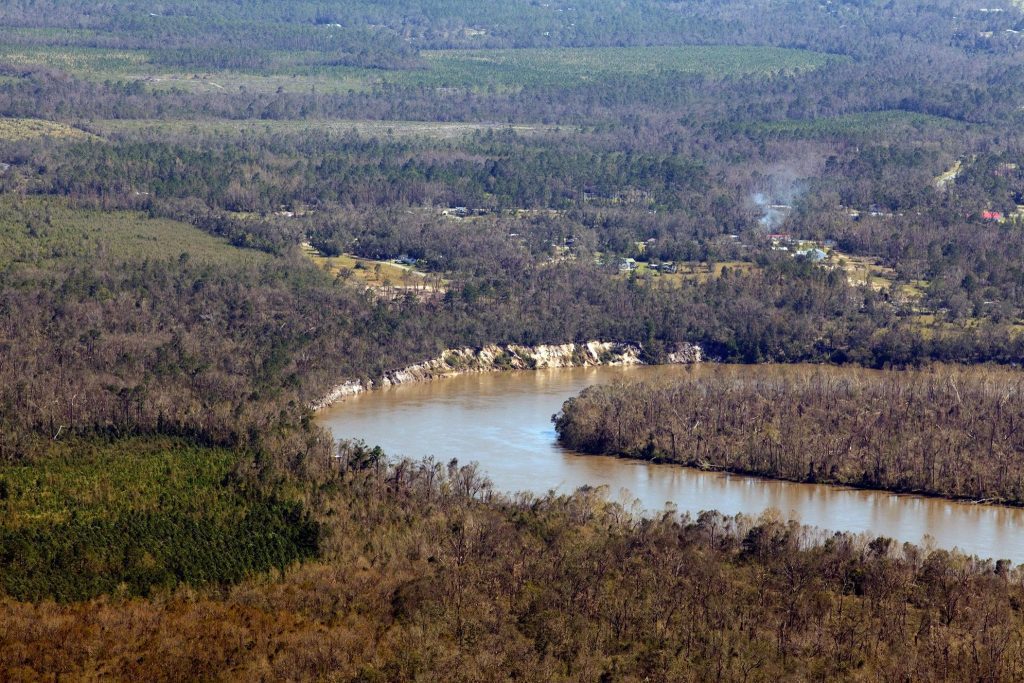
An aerial view of the Apalachicola River’s Bristol Bluffs, post Hurricane Michael. Photo by Hurricane Creekkeeper John Wathen.
The Resiliency of the Apalachicola River System
Fish kills and downed trees are alarming. But the many ecosystems that makeup the Apalachicola River and Bay evolved with hurricanes. “They’re actually pretty amazingly resilient.” Roy said. “They’ll recover quickly.”
Georgia gained a new perspective of these systems last week, when she flew from Apalachicola to Chattahoochee and back with volunteer pilot Tom Hutchings, and Hurricane Creekkeeper John Wathen.
“You could see how one of the big benefits to our river corridor is that we have a forested, protected, not very developed system. And so that was a protective factor.” Georgia said.
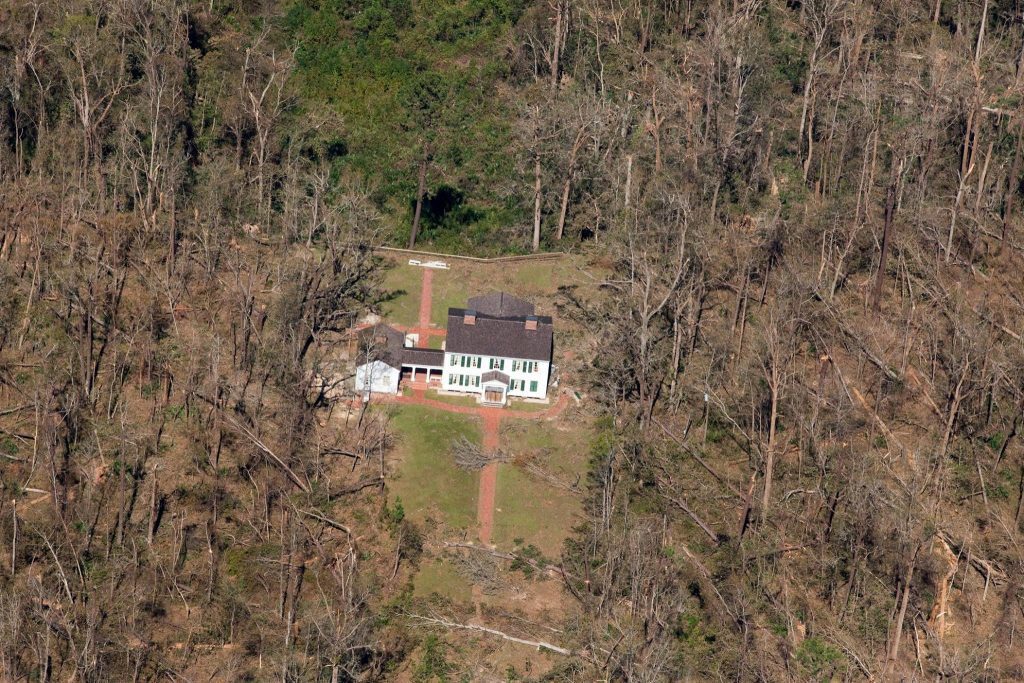
An aerial view of the Gregory House in Torreya State Park, post Hurricane Michael. Photo by Hurricane Creekkeeper John Wathen.
Forests are a natural windbreak, though Hurricane Michael was never lower than a category 3 as it made its way up the Apalachicola River corridor. And that did take a toll on trees. WFSU-FM’s Ryan Daily reported Friday that Agriculture Commissioner Adam Putnam is claiming $1.3 billion in timber damage. That’s a harsh blow for one county along the river: eighty percent of Calhoun County’s economy is timber-related.
As their plane made its way back to Apalachicola, Georgia saw more beneficial habitat.
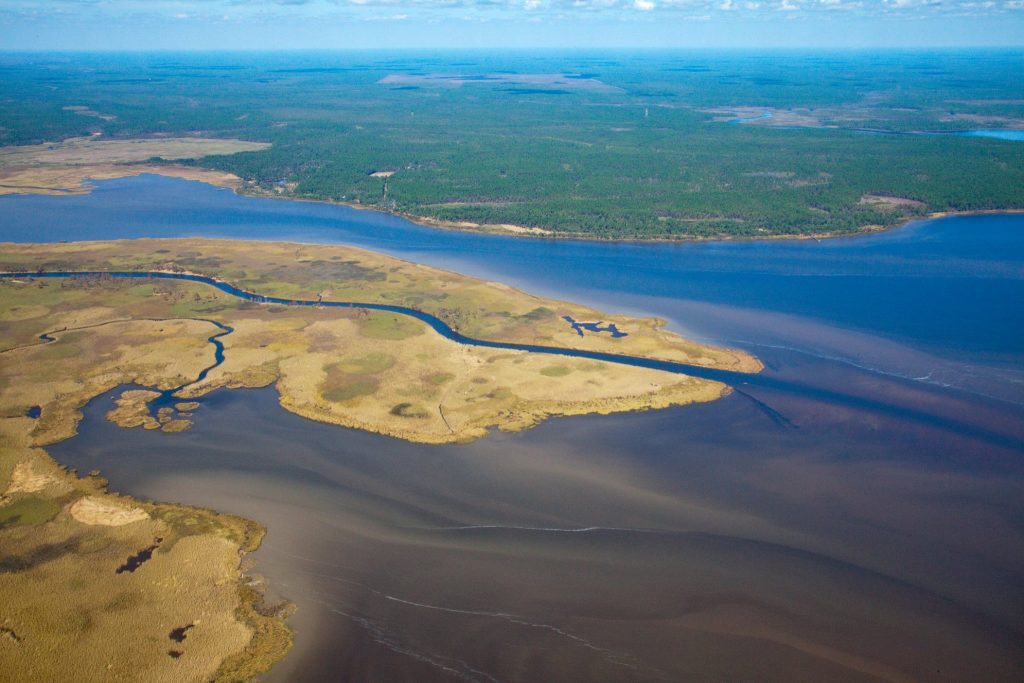
An aerial view of marshes in the Apalachicola River delta. Photo by Hurricane Creekkeeper John Wathen.
“One of my favorite pictures from the trip was, the photographer captured one of the marsh pictures as you come back down to the delta” Georgia said. “In terms of flooding and rain, that coastal marsh absorbs that, and is a protective factor.”
Just as healthy habitats predict an ecological recovery, Georgia sees hope in the togetherness of river communities. “The water connects us, it connects these communities, from the top of the river down to the bay.”

